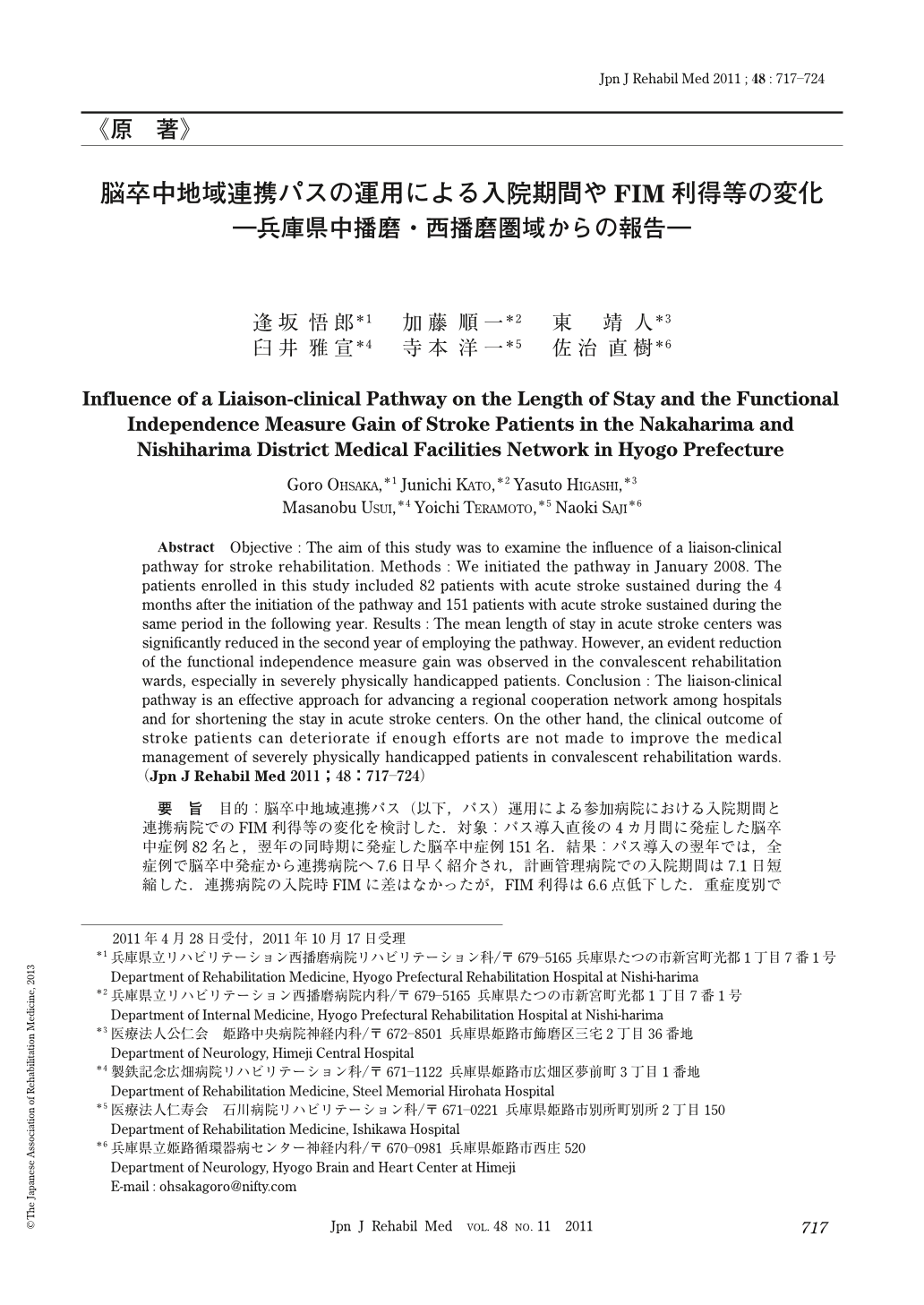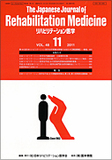Japanese
English
- 販売していません
- Abstract 文献概要
- 1ページ目 Look Inside
- 参考文献 Reference
要旨 目的:脳卒中地域連携パス(以下,パス)運用による参加病院における入院期間と連携病院でのFIM利得等の変化を検討した.対象:パス導入直後の4カ月間に発症した脳卒中症例82名と,翌年の同時期に発症した脳卒中症例151名.結果:パス導入の翌年では,全症例で脳卒中発症から連携病院へ7.6日早く紹介され,計画管理病院での入院期間は7.1日短縮した.連携病院の入院時FIMに差はなかったが,FIM利得は6.6点低下した.重症度別では,重度症例(FIM:18~79点)で早期転院が進み転院数が倍増するとともに,FIM利得が8.2点低下した.結論:パスは病院間連携や転院を促進させる効果を持つが,連携病院でのリハ医療サービス向上が十分でない状況で,計画管理病院での入院期間短縮,重度症例の転院増加が進めば,連携病院でのFIM利得低下等をきたす可能性を否定できない.パスによる連携システム整備と並行して,連携病院の脳卒中医療を改善する努力が不可欠である.
Abstract Objective : The aim of this study was to examine the influence of a liaison-clinical pathway for stroke rehabilitation. Methods : We initiated the pathway in January 2008. The patients enrolled in this study included 82 patients with acute stroke sustained during the 4 months after the initiation of the pathway and 151 patients with acute stroke sustained during the same period in the following year. Results : The mean length of stay in acute stroke centers was significantly reduced in the second year of employing the pathway. However, an evident reduction of the functional independence measure gain was observed in the convalescent rehabilitation wards, especially in severely physically handicapped patients. Conclusion : The liaison-clinical pathway is an effective approach for advancing a regional cooperation network among hospitals and for shortening the stay in acute stroke centers. On the other hand, the clinical outcome of stroke patients can deteriorate if enough efforts are not made to improve the medical management of severely physically handicapped patients in convalescent rehabilitation wards.

Copyright © 2011, The Japanese Association of Rehabilitation Medicine. All rights reserved.


